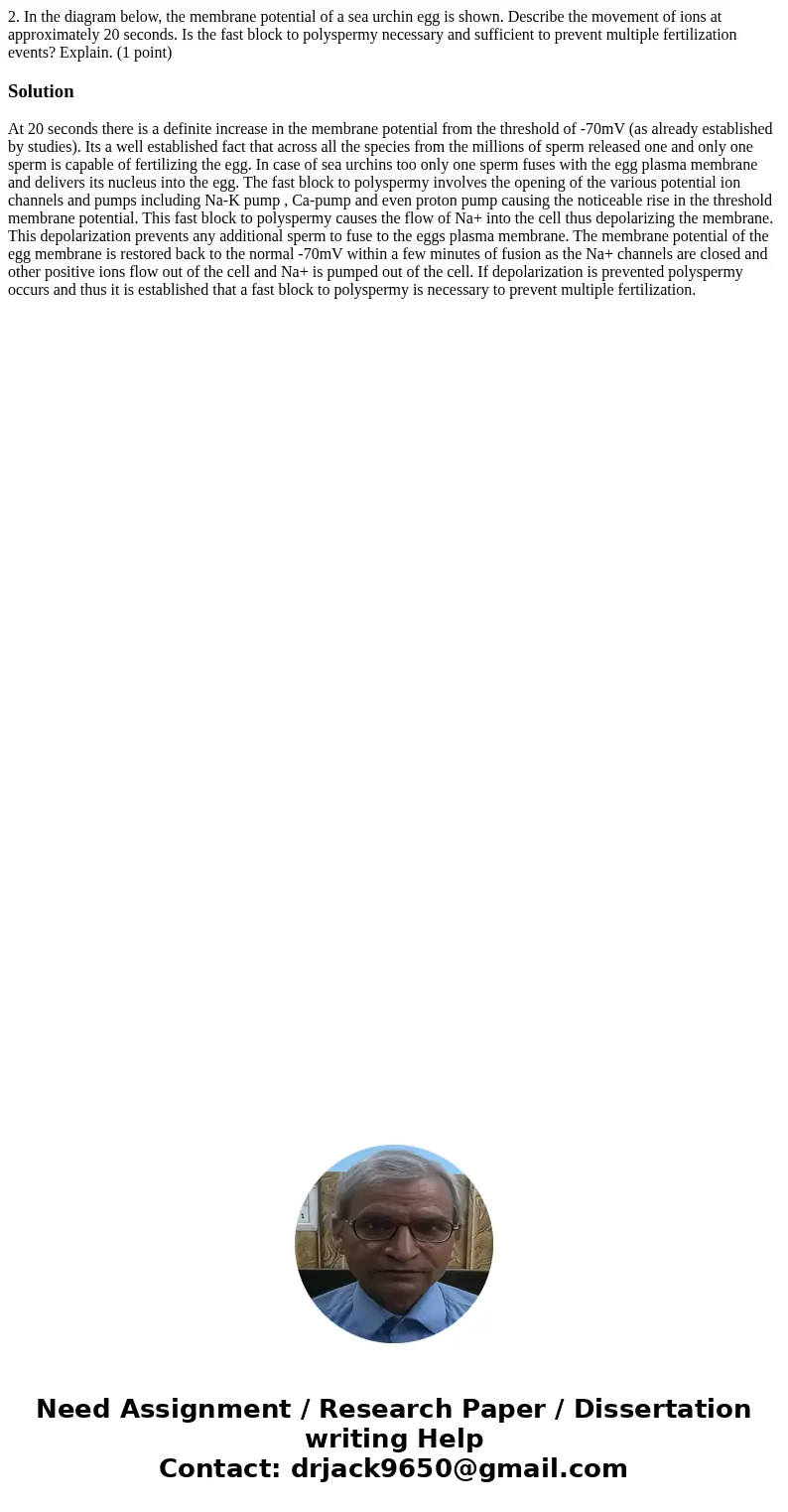2 In the diagram below the membrane potential of a sea urchi
Solution
At 20 seconds there is a definite increase in the membrane potential from the threshold of -70mV (as already established by studies). Its a well established fact that across all the species from the millions of sperm released one and only one sperm is capable of fertilizing the egg. In case of sea urchins too only one sperm fuses with the egg plasma membrane and delivers its nucleus into the egg. The fast block to polyspermy involves the opening of the various potential ion channels and pumps including Na-K pump , Ca-pump and even proton pump causing the noticeable rise in the threshold membrane potential. This fast block to polyspermy causes the flow of Na+ into the cell thus depolarizing the membrane. This depolarization prevents any additional sperm to fuse to the eggs plasma membrane. The membrane potential of the egg membrane is restored back to the normal -70mV within a few minutes of fusion as the Na+ channels are closed and other positive ions flow out of the cell and Na+ is pumped out of the cell. If depolarization is prevented polyspermy occurs and thus it is established that a fast block to polyspermy is necessary to prevent multiple fertilization.

 Homework Sourse
Homework Sourse